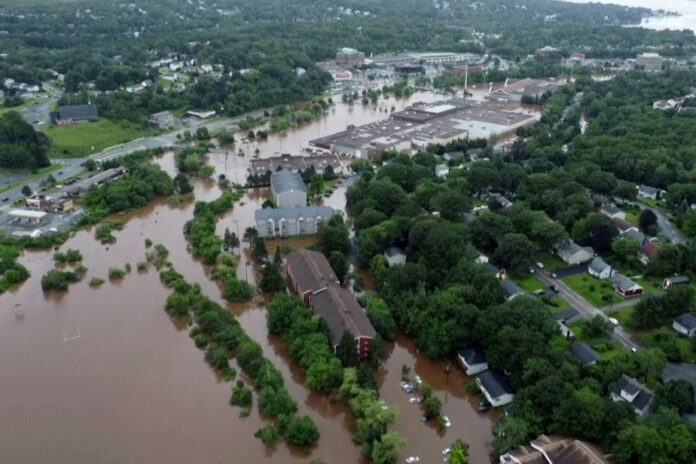(Ottawa) Climate change is driving up insurance rates in Canada and raising questions about whether private coverage will even be available to some Canadians in the future.
The most recent inflation data from Statistics Canada showed home insurance costs rose 8.2% nationally in June, compared to a year earlier. Increases were around 10% in Alberta, British Columbia and Saskatchewan, and almost 12% in Nova Scotia.
The increase in premiums was partly due to inflation, but also due to global reinsurance companies reassessing Canada’s risk profile and raising their prices, says vice president for climate and business to the Insurance Bureau of Canada, Craig Stewart.
Most companies that sell property insurance in Canada are turning around and transferring some of the risk associated with their policies to global companies called reinsurers.
So when a customer makes a claim with their local insurance agent, that company will in turn cover some of their expenses by taking out insurance from a major global funder.
According to Stewart, reinsurance premiums have seen increases of 25% to 100% over the past year. Not all of this increase was passed on to consumers, but some was meant to be.
The Insurance Bureau of Canada reported last year that personal property insurance claims costs have averaged more than $7 billion a year over the past five years in Canada. This compares to 5.8 billion in the previous five years and 2 billion in the late 1990s and early 2000s.
The bureau said severe weather caused about $3.1 billion in insured losses in Canada last year, making 2022 the third-worst year on record.
Unlike 2016, when the majority of claims were related to the fire in Fort McMurray, Alberta, claims were spread across the country last year.
The derecho in Quebec and Ontario, post-tropical storm Fiona in the Atlantic provinces, flooding in Manitoba and a series of major winter and summer storms in Ontario, Quebec and British Columbia have all resulted in a number number of complaints.
For now, the most significant effect is higher premiums, but Mr. Stewart added that some businesses, particularly tourism and hotel operators in parts of western Canada, have not been able to renew their insurance in recent years.
Some major insurance companies have pulled out of California and Florida altogether over the past 18 months. Farmers Insurance notably stopped selling home and auto insurance in Florida in July, while State Farm did the same in California in May. In California, the high risk of wildfires, and in Florida, hurricanes, are driving businesses away.
Mr. Stewart acknowledged that it is not imminent, but not impossible, that such conversations could eventually take place in Canada.
“The amplification of these extreme weather events over the past five years has happened faster than anyone could have imagined, so unfortunately we may be having discussions like this sooner rather than later,” he said. he admits.
Institute for Catastrophic Loss Reduction director Paul Kovacs, however, does not believe we will see an exodus of insurance companies from Canada. According to him, the premiums will increase, but the costs can be managed.
Kovacs, however, noted the need for better weather protection in higher risk areas.
“If we take care of our homes and infrastructure, the damage won’t necessarily be greater,” he said.
In his opinion, it has been proven that investing $1 in prevention can save governments, insurance companies and individuals between $5 and $10 in the event of a disaster.
However, it is not always easy to convince owners and governments to make the necessary investments.
According to Kovacs, the best time to make such improvements is immediately after a major event, when people are already rebuilding. This is when they are most open to investing in order to better protect themselves afterwards.

